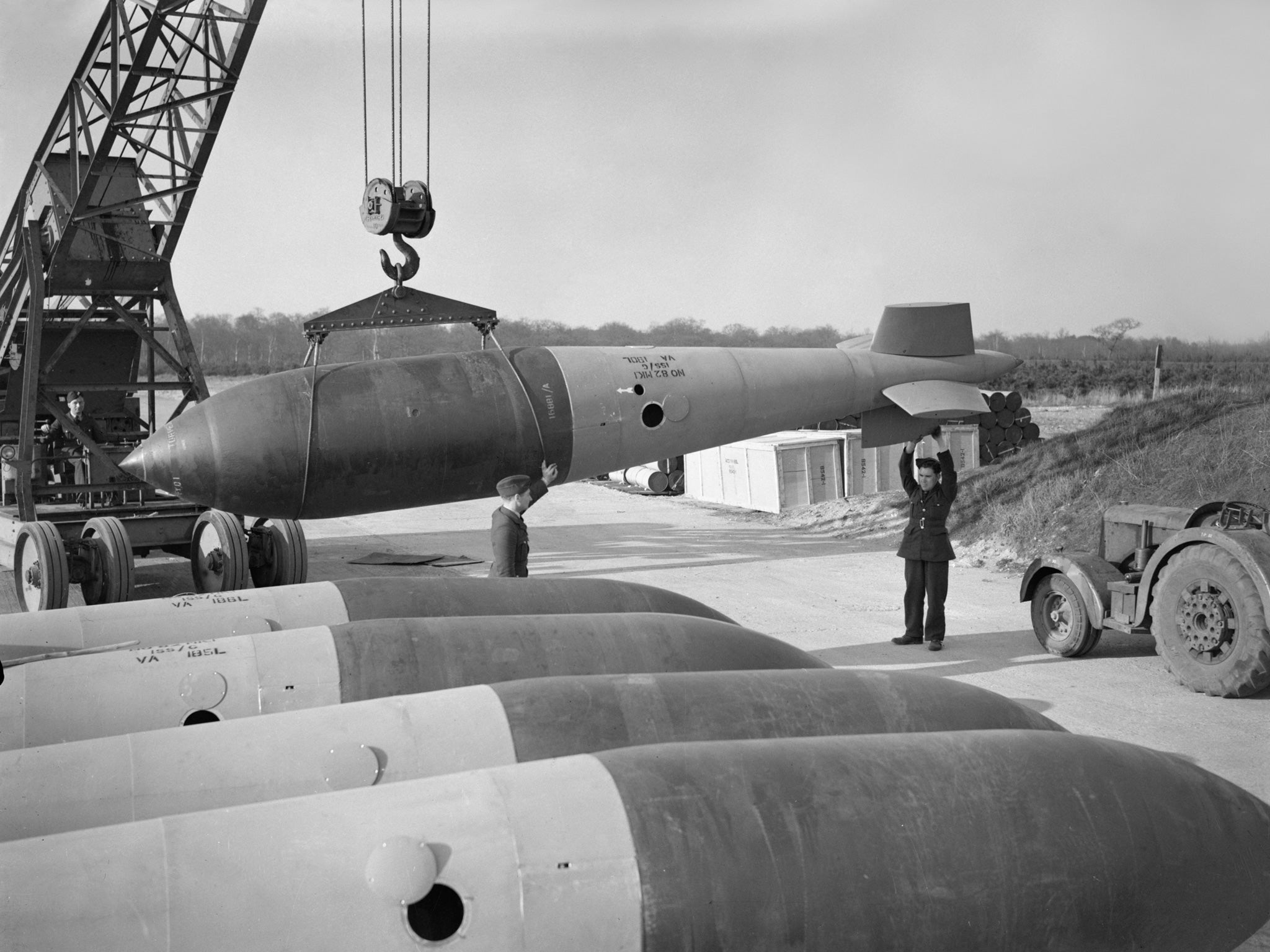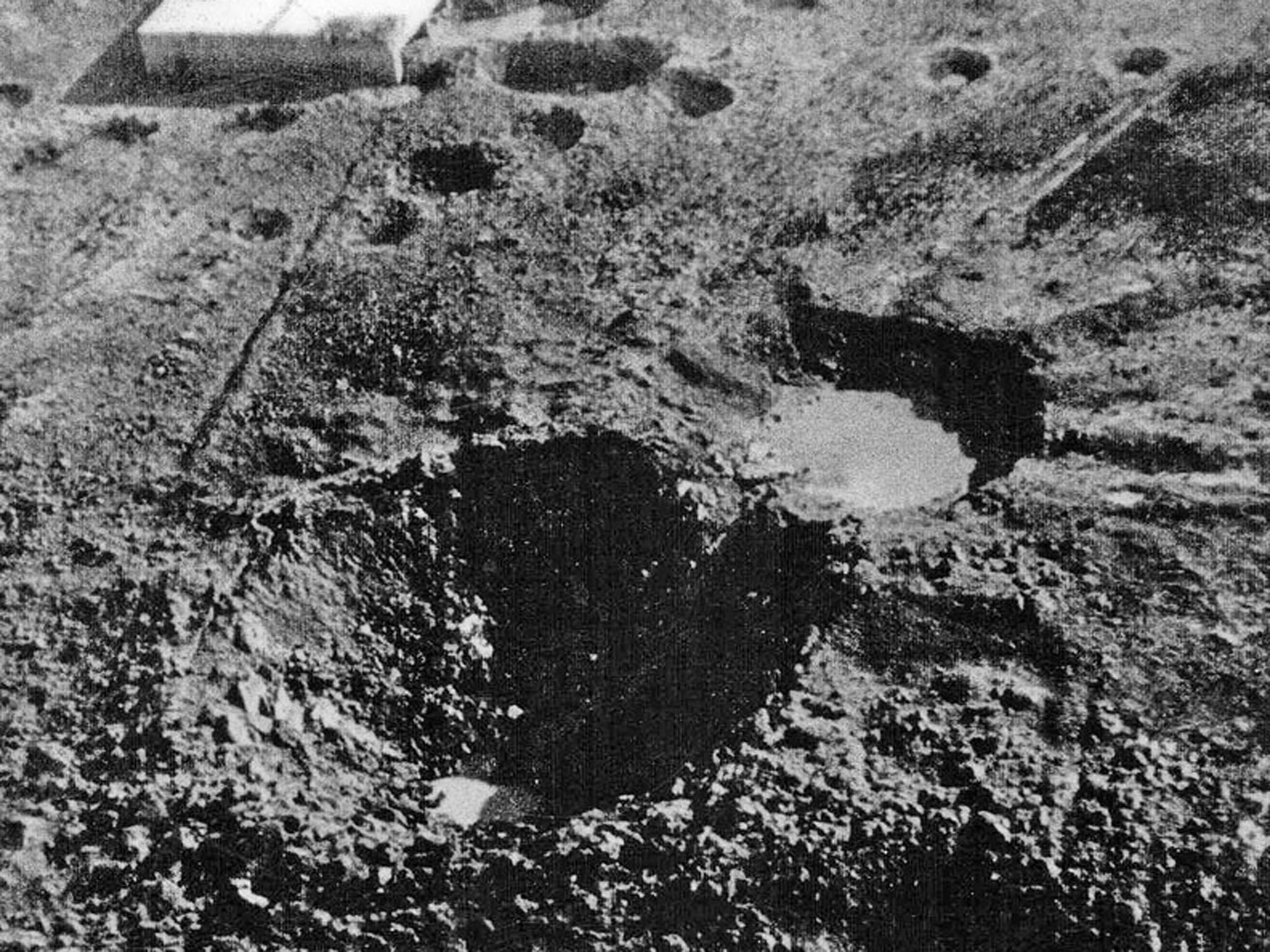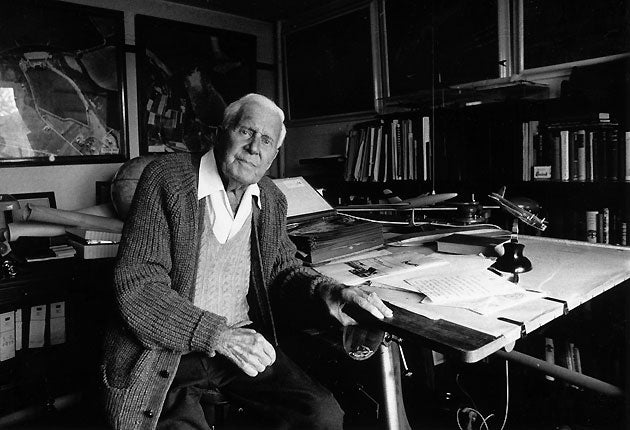Unearthed: Secrets of the devastation caused by Grand Slam, the largest WWII bomb ever tested in the UK
The Barnes Wallis creation left a hole 70ft deep and 130ft wide - now hi-tech methods are revealing just how far the devastation spread

Your support helps us to tell the story
From reproductive rights to climate change to Big Tech, The Independent is on the ground when the story is developing. Whether it's investigating the financials of Elon Musk's pro-Trump PAC or producing our latest documentary, 'The A Word', which shines a light on the American women fighting for reproductive rights, we know how important it is to parse out the facts from the messaging.
At such a critical moment in US history, we need reporters on the ground. Your donation allows us to keep sending journalists to speak to both sides of the story.
The Independent is trusted by Americans across the entire political spectrum. And unlike many other quality news outlets, we choose not to lock Americans out of our reporting and analysis with paywalls. We believe quality journalism should be available to everyone, paid for by those who can afford it.
Your support makes all the difference.The final secrets of Britain's largest-ever conventional weapon of war are being 'unearthed' by archaeologists.
Geophysics experts are using ground-penetrating radar and other high tech methods to 'x-ray' the ground, in a remote area of the New Forest in Hampshire, to shed new light on the most powerful top secret World War Two weapon test ever carried out in the UK.
The weapon - a bomb designed by the British aircraft and munitions inventor, Barnes Wallis, and codenamed 'Grand Slam' - was almost 26 foot long and weighed 22,000 pounds, substantially bigger than any other wartime explosive device ever developed by Britain.
The New Forest test is historically important because it heralded an expansion in the crucial strategic air offensive against key infrastructure targets in Nazi Germany. The first RAF bomber command Grand Slam sortie got underway within hours of the successful test of the bomb.
Four geophysical techniques - ground penetrating radar, magnetometry, electrical resistivity and electrical resistivity tomography - are being used by the archaeologists to assess the damage done to the large concrete target building which has lain buried under a vast mound of earth for the past 66 years.
Barnes Wallis' Grand Slam bomb was designed to seriously damage and destroy buildings, bridges, viaducts and other structures without necessarily having to achieve a direct hit against them. It worked by creating a severe yet localized artificial earthquake.
The one and only test of the bomb took place on 13 March 1945. The weapon was released from a specially adapted Lancaster bomber flying at 16,000 feet over the River Avon just east of the Hampshire town of Fordingbridge, almost two miles west of the New Forest target building. Half a minute after release, the bomb, with its specially designed aero-dynamic fins, hit the target area at more than 700 miles per hour.

Penetrating deep into the ground it produced, after a predetermined nine second interval, a massive explosion which generated the desired artificial earthquake - and created a 70 foot deep 130 foot diameter crater. It was the biggest bomb ever dropped on Britain before or since.
The geophysical investigation and the research operation in the National Archives are expected to reveal just how much damage the earthquake effect had on the target building - but oral history research recently carried out by the New Forest archaeological team suggests that the entire structure was seen to physically move when the bomb exploded some 250 feet away.
After the New Forest test, Grand Slam bombs were used between 14 March and 19 April, 1945 against nine strategically important German targets including the Schildesche railway viaduct near Bielefeld, the Arnsberg railway viaduct, the Nienburg railway bridge, submarine pens near Bremen and German gun batteries on the island of Heligoland.
The Grand Slam campaign played a key role in helping to speed up the defeat of German forces in the final two and half months of the war. Almost 100 Grand Slam bombs were produced of which 42 were used in nine major Bomber Command sorties. Today only five publicly accessible examples survive - in the RAF Museum in north-west London, Brooklands Museum in Surrey, Dumfries and Galloway Aviation Museum, the Battle of Britain Memorial Flight Visitor Centre at RAF Coningsby in Lincolnshire and Kelham Island Museum, Sheffield.
The New Forest National Park Authority's current geophysical survey and historical investigation into Grand Slam is part of a wider project researching and surveying the park's often unappreciated wartime role. Quite apart from Grand Slam, the New Forest was used as a test site for the first Barnes Wallis bouncing bombs, the development of the 'Tallboy' predecessor of Grand Slam, as well as early demonstrations of the Churchill tank. The forest was also home to nine wartime airfields, many of which played a key role in D-Day.

The vast concrete bunker which formed the centre of the Grand Slam target area had originally been built in 1941.
Up till now, historians had thought that it was constructed as a replica enemy submarine pen complex - so as to develop bomb strategy against such targets along occupied Europe's coastline.
However, a series of once-secret documents found in the National Archives by the New Forest National Park research team over the past year have now revealed that the building was originally constructed as a test structure to help develop more effective public air raid shelters.
It appears to have been experimentally constructed out of successive layers of different types of concrete - designed to inhibit the transmission of shock-waves through its walls and roof.
The researchers have even found a previously unknown plan of the building, showing the points at which test detonations were carried out on its roof to assess the effectiveness of the newly developed experimental multi-layer air raid shelter technology.
Bizarrely, Barnes Wallis had actually designed Grand Slam back in 1940 - but political disinterest, bureaucratic obstacles and weapon delivery problems conspired to prevent its final development until early 1945.
"Our geophysical and historical research is helping us to more fully understand and appreciate the testing of Grand Slam - and the New Forest's more general major, yet little known, role in World War Two," said James Brown, an archaeologist at the New Forest National Park Authority.
For more information, click HERE
Join our commenting forum
Join thought-provoking conversations, follow other Independent readers and see their replies
Comments